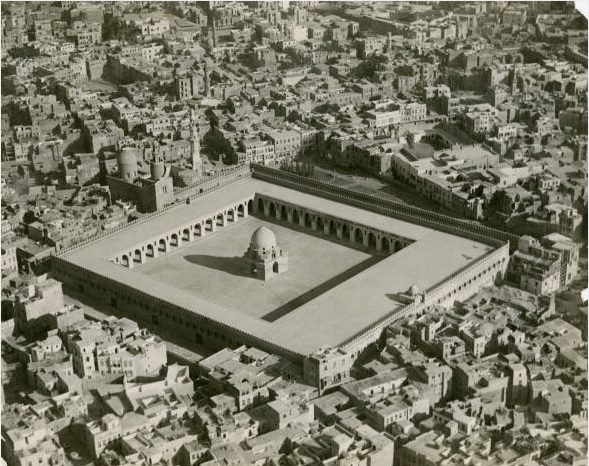
(Wikimedia Commons public domain photograph)
While we waited for the other members of our tour group to arrive — they’ve gradually been coming in all day today and will continue to land into the early hours of tomorrow — we’ve enjoyed ourselves.
Last night, my wife and I had a really good teppanyaki dinner with the four members of the tour (that we know of) who had already arrived. Two were with us in Alexandria and two more arrived last night from Tunisia. Today, the six of us went first to the Citadel of Cairo, which was built between 1176 AD and 1183 AD by the great Sultan Salah al-Din al-Ayyubi (aka Saladin), who is — and quite deservedly so — one of the great heroes of Islamic history.
The Citadel offers magnificent views of the city below and of the pyramids in the distance beyond — not just of the famous Great Pyramid of Cheops (Khufu) on the Giza Plateau and its companion pyramids of Chephren (Khafre) and Mykerinos (Menkaure), but of the unjustly much-less-famous Dahshur pyramid complex further to the south — as well as of the Muqattam Hills that form the eastern boundary of the Nile Valley at Cairo.
Atop the Citadel is the Muhammad Ali Mosque, built between 1830 and 1848 not by the American prize fighter of that name but by Muhammad Ali Pasha, the nominally Ottoman nineteenth-century governor and de facto ruler of Egypt who is regarded by many as effectively the founder of the modern nation. Also called the “Alabaster Mosque” and built in a thoroughly, even stereotypically, Ottoman Turkish style, it is by far the most visible mosque in the city. It’s never been a particular favorite of mine — among Ottoman structures, I’ll take Istanbul’s “Blue Mosque” over it any day of the week– but it’s definitely striking and worth a visit now and again.

(Wikimedia Commons public domain photo)
From the Citadel, we headed to the Mosque of Ahmad b. Tulun, the oldest intact mosque (and the largest) in Egypt, which was one of our favorite places back when we lived in Cairo. I like to talk about it as a historical illustration in my Islamic humanities classes, because the case of Ahmad b. Tulun represents the beginning of the break-up of the unified Islamic empire, when what Marshall G. S. Hodgson called the High Caliphal Period began to turn into what he termed the Early Middle Period.
Essentially, Ibn Tulun, who served as the governor of Egypt under the Abbasid dynasty from AD 868 to AD 884, presented the Abbasid caliph with a terrible dilemma when he asked that his son be permitted to succeed him in office. If the caliph said “No,” Ibn Tulun might well say to the regime in Baghdad, “Fine. Then I declare my independence.” And he would, in that case, take with him one of the richest, most populous, most cultured, and most agriculturally productive parts of the empire, as well as its large army. But if the caliph said “Yes,” he would still be granting effective independence to Egypt by permitting the growth of a self-perpetuating and self-selecting provincial dynasty. He chose the latter option, and thus the short-lived Tulunid dynasty emerged. This was the first day of the rest of the life of the Abbasid empire.
Posted from Cairo, Egypt










